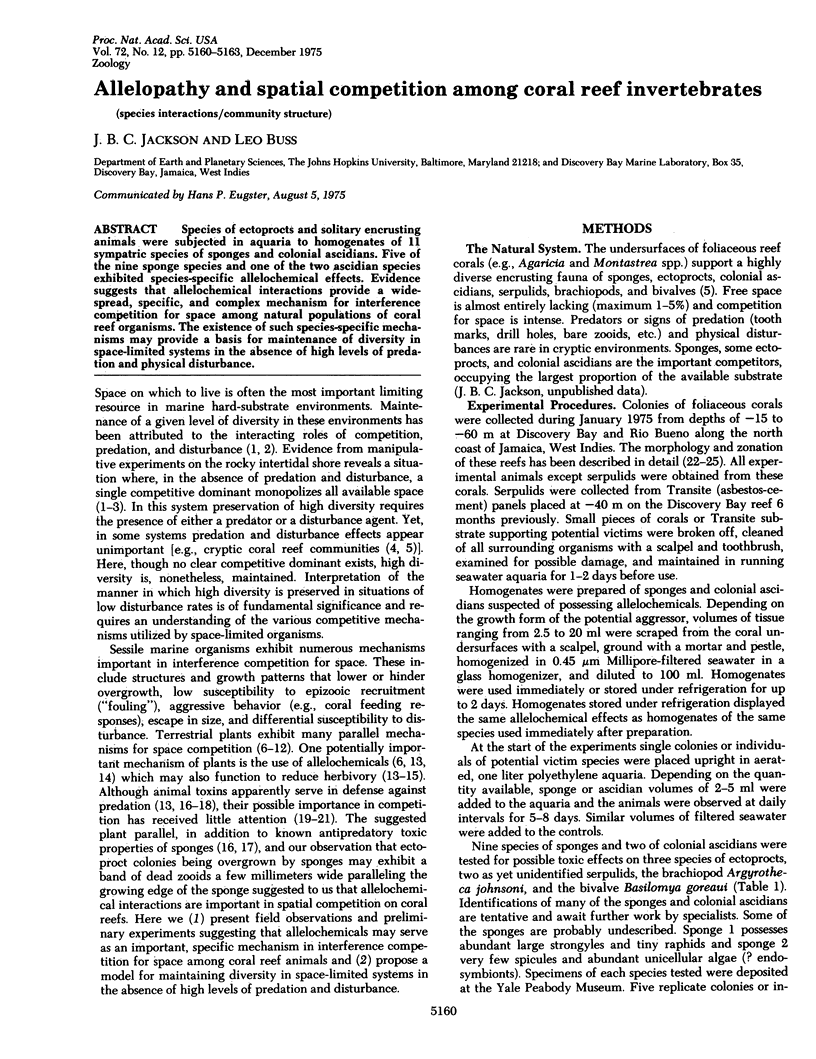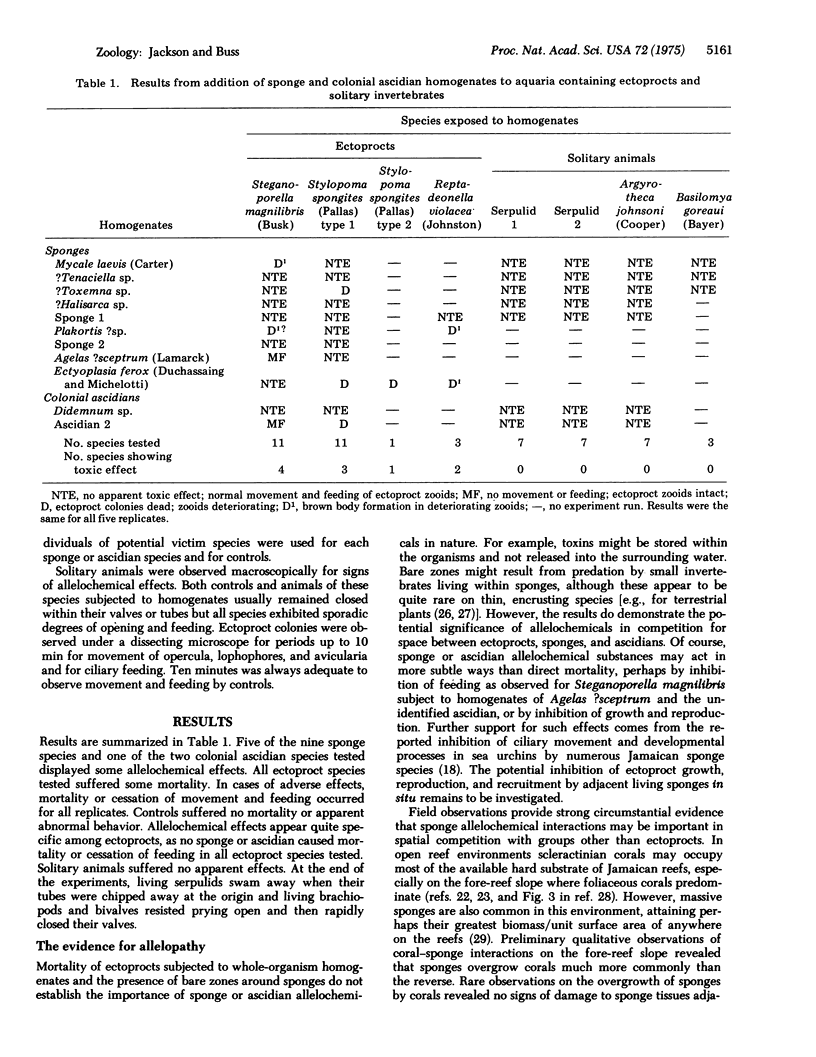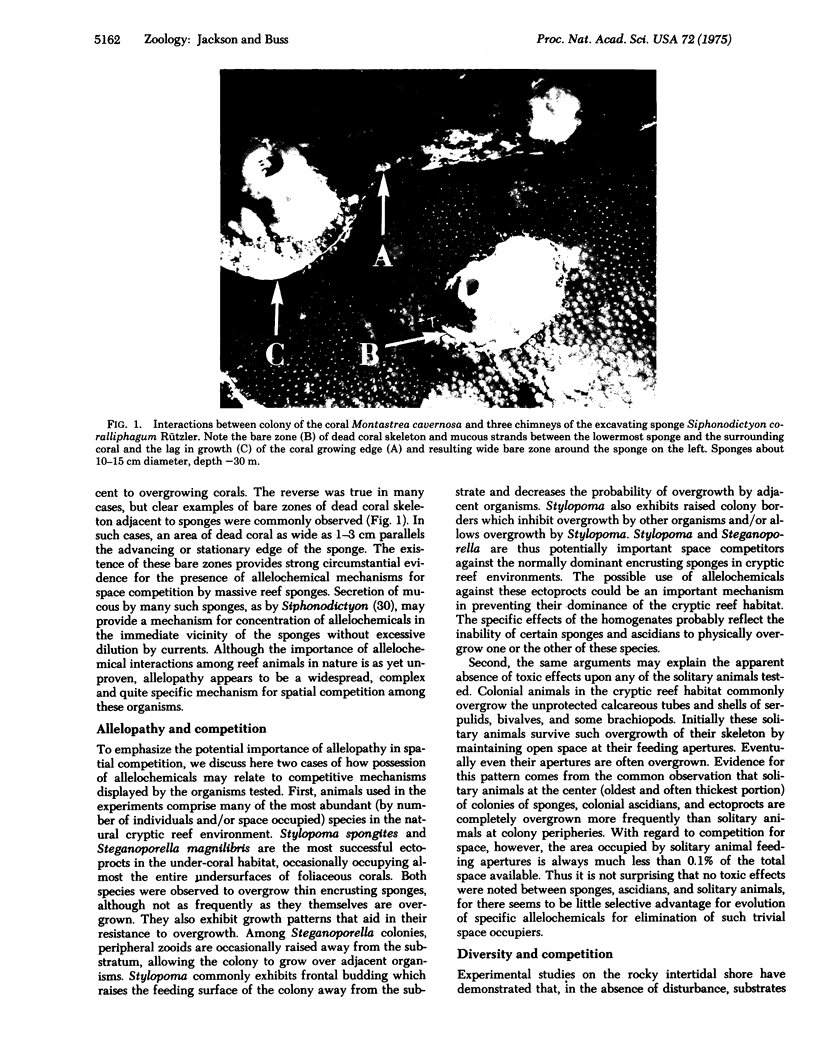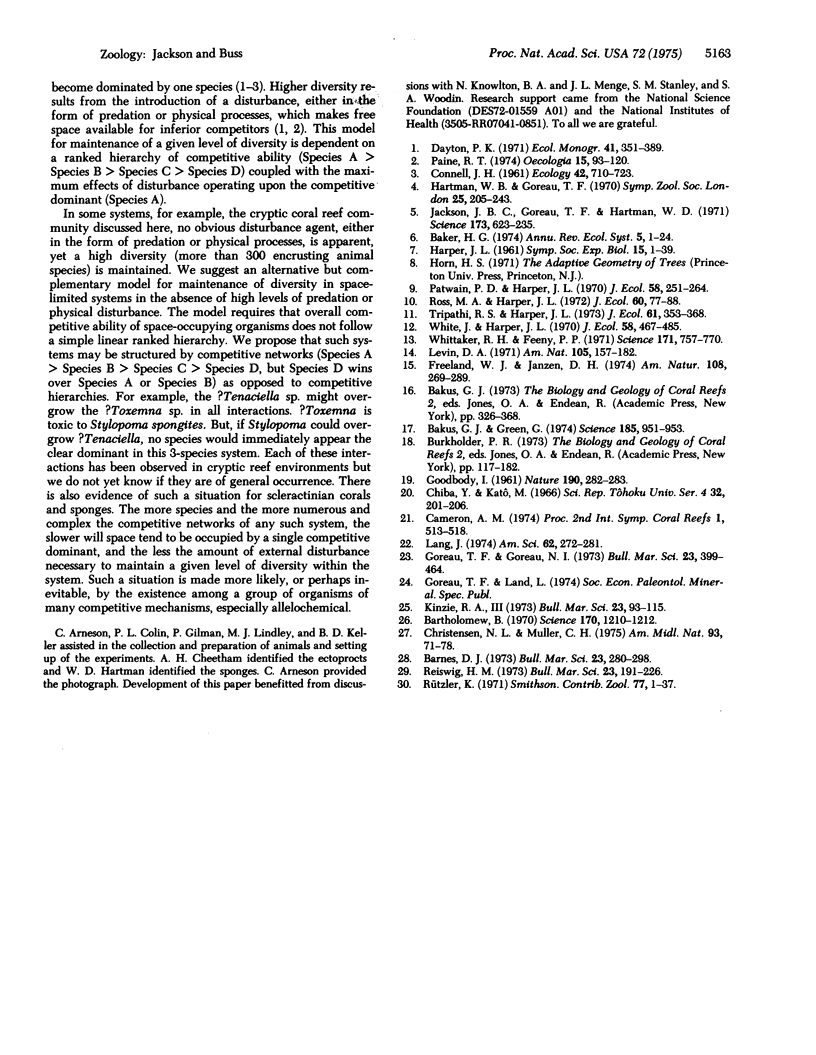Abstract
Species of ectoprocts and solitary encrusting animals were subjected in aquaria to homogenates of 11 sympatric species of sponges and colonial ascidians. Five of the nine sponge species and one of the two ascidian species exhibited species-specific allelochemical effects. Evidence suggests that alleochemical provide a wide-spread, specific, and complex mechanism for interference competition for space among natural populations of coral reef organisms. The existence of such species-specific mechanisms may provide a basis for maintenance of diversity in space-limited systems in the absence of high levels of predation and physical disturbance.
Keywords: species interactions, community structure
Full text
PDF



Images in this article
Selected References
These references are in PubMed. This may not be the complete list of references from this article.
- Bakus G. J., Green G. Toxicity in sponges and holothurians: a geographic pattern. Science. 1974 Sep 13;185(4155):951–953. doi: 10.1126/science.185.4155.951. [DOI] [PubMed] [Google Scholar]
- Bartholomew B. Bare Zone between California Shrub and Grassland Communities: The Role of Animals. Science. 1970 Dec 11;170(3963):1210–1212. doi: 10.1126/science.170.3963.1210. [DOI] [PubMed] [Google Scholar]
- Jackson J. B., Goreau T. F., Hartman W. D. Recent brachiopod-coralline sponge communities and their paleoecological significance. Science. 1971 Aug 13;173(3997):623–625. doi: 10.1126/science.173.3997.623. [DOI] [PubMed] [Google Scholar]
- Whittaker R. H., Feeny P. P. Allelochemics: chemical interactions between species. Science. 1971 Feb 26;171(3973):757–770. doi: 10.1126/science.171.3973.757. [DOI] [PubMed] [Google Scholar]



